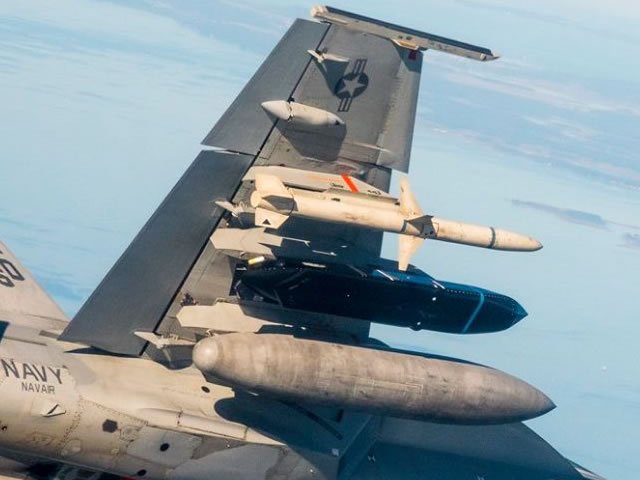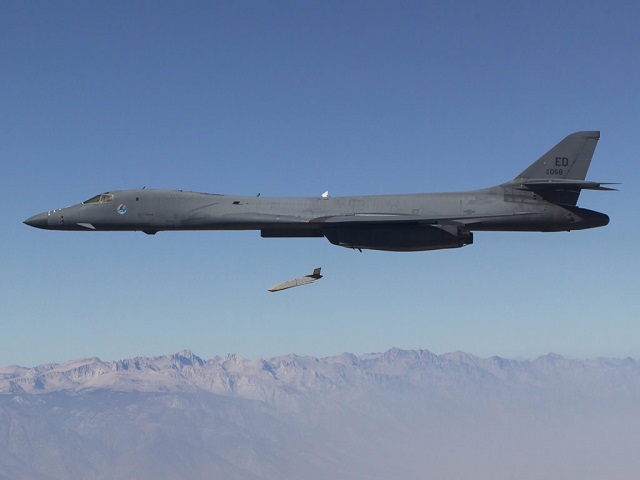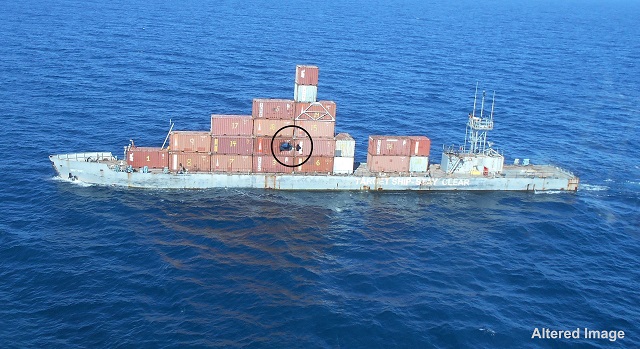The US Navy has completed in-flight load testing of the Lockheed Martin-built long-range anti-ship missile, or LRASM, on the Boeing F/A-18 Super Hornet and will now move to noise and vibration trials.
The final flight carrying an inert “mass simulant vehicle” occurred on 6 January over the navy’s Patuxent River, Maryland test site, according to Naval Air Systems Command (NAVAIR).
A ship-destroying derivative of Lockheed’s extended-range AGM-158B “JASSM” air-to-surface cruise missile, the subsonic weapon is being certified for carriage on the F/A-18E/F and Boeing B-1B.
LRASM programme manager Capt Timothy Hill tells Flightglobal in a statement today that the next stage of flight certification will begin later this month. Those noise and vibration tests will employ the same test missile in tandem with another “instrumented measurement vehicle” to collect data.


A Boeing F/A-18 carries the LRASM “mass simulant vehicle” on 6 January.
US Navy
A separate statement from Mike Fleming, Lockheed’s air-launched LRASM director, confirms that the programme aims to achieve early operational capability on the F/A-18E/F in 2019.
Weapons will begin dropping from aircraft in “early 2017,” adds Hill. Those jettison tests will precede live-fire trials, assuming things go smoothly.
“Live-fire tests are planned in 2017 with the B-1B and continue through F/A-18E/F early operational capability in 2019,” he says.
The programme – jointly supported by DARPA and the US Air Force – aims to have LRASMs loaded out on an initial tranche of B-1Bs approximately one year earlier, in 2018. The aircraft has already launched several rounds during early prototype testing against a target ship in 2013.

B-1B deploys LRASM during developmental testing in 2013.
US Air Force
The weapon could turn the supersonic B-1B into one the most formidable aircraft in a maritime war, capable of carrying 24 LRASM cruise missiles, according to the air force.
The bomber, built in the 1980s to counter Russia, has earned its stripes in Afghanistan, Iraq and more recently Syria. It could eventually play an outsized role in the Pacific theatre.
Once deployed, LRASM will be the navy’s most sophisticated air-launched, data-linked anti-ship missile, designed to find targets among flotillas and survive electromagnetic disruption.
It was created to meet the navy’s air-launched offensive anti-surface warfare (OASuW) capability gap, and now Lockheed and other missile makers are preparing follow-on designs for an upcoming OASuW Increment II competition.

US Navy
Source: FlightGlobal.com



















